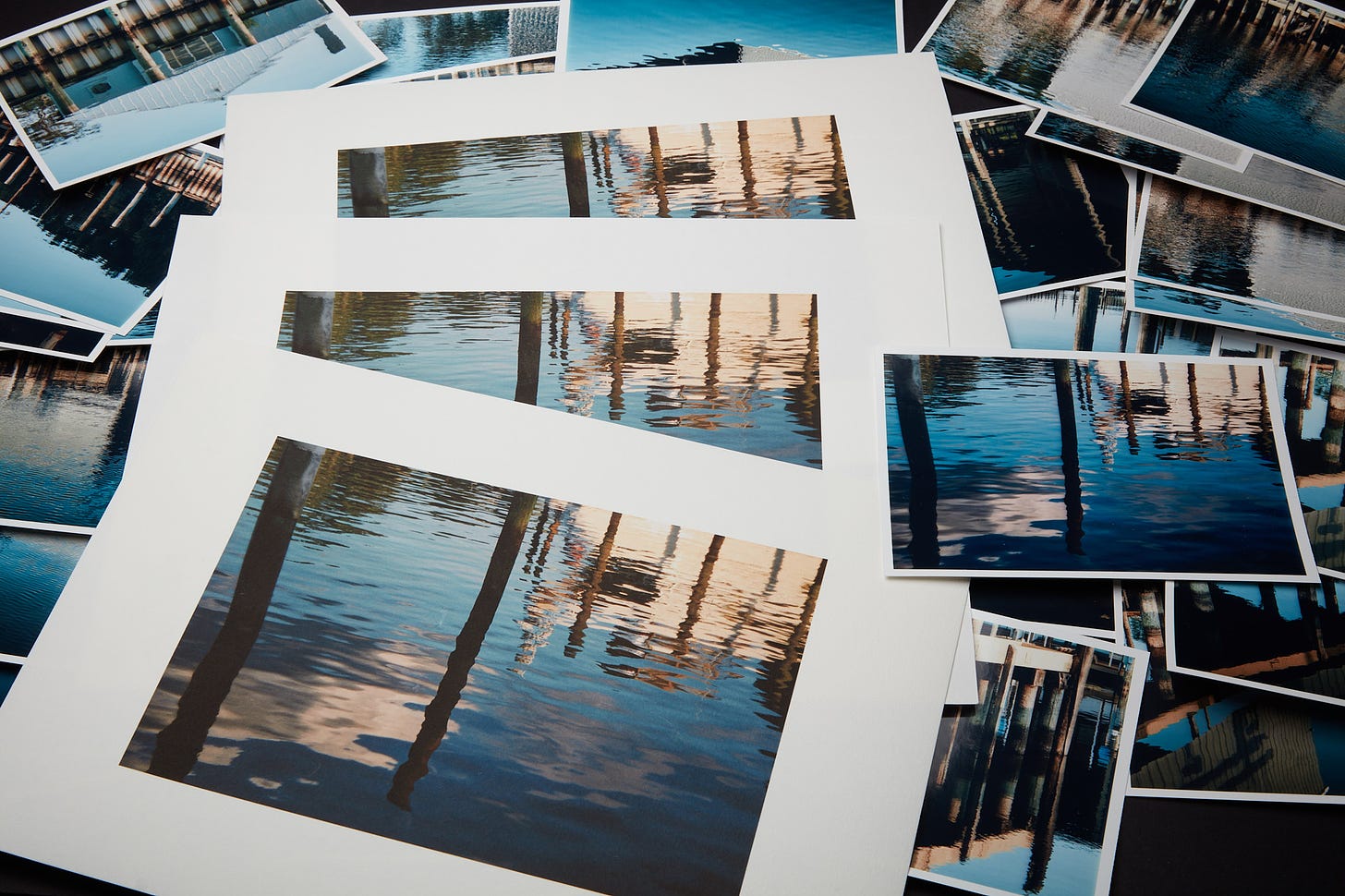
Those of us who make prints tend to spend far more time evaluating proofs than making the final finished definitive print. This is especially true when evaluating and choosing among different papers or slightly different tweaking of highlights, shadows, and contrast. Today’s tip is short and sweet but just might revolutionize your proofing and decisions made getting to that final print.
Here it is, don’t blink or you’ll miss it:**
Before you decide on which proof you prefer, do yourself a huge favor and switch the order of the prints. In other words, swap their positions from left to right.
TLDR;
One hundred and nine words (with the intro), and you have a magical, life-changing proofing superpower. Longtime readers know that I am never that succinct. Never fear, I’ll do my best to over-explain this with a bunch more words today but it will be short.
Why is this a life-changing superpower? You might not even believe it if you’re not actually proofing two similar prints right now. The reasons this is amazingly helpful are manifold. Chalk it up to human visual perception, psychology, environmental factors, and even the shirt you happen to be wearing that day combined with standing slightly closer to one proof than the other.
Most readers probably don’t have a perfect environment with perfectly even light. This is significant even if your environment is “okay”. Obviously, hideously bad, uneven, off-colored, dim, or multi-colored light sources are going to show giant differences when swapping proof print positions. You can probably even imagine that without seeing it yourself. Please believe me that this holds true even in near-perfect environments.
In the studio, we have a large GTI viewing booth. This is about as good as it gets when used in a room with no other light sources. In many of our workshops even experienced printers are blown away by the change in their perception of two similar prints when swapping print positions. I typically point this out when a small group is evaluating different prints with seemingly opposing opinions on the same factors they’re discussing.
I also point out how much influence their clothing has on perception of print color. This is pretty easy by asking them to take a step forward and back or left to right. It’s even more eye-opening if I take a black card and a white card and put it in front of their clothing. Then it’s obvious how much that influences perception of the print, especially the shadows.
Even without those environmental factors that are easily pointed out or neutralized, it’s shocking how swapping print positions influences perception. Yes, even with all other factors aside, there’s still a whopping difference in how most people perceive two similar prints when their positions are swapped. I highly recommend making this position swapping a habit when evaluating proofs if you’ve not already.
Less than 500 words, including title and subtitle. That’s about as concise as I can be. Have a great week and look forward to the next in our DIY series coming Thursday.




Left out several crucial aspects..
ID back of prints 101 with critical data, soft pencil
Colour Blindness in General & Female/Male Ratio
Visual Colour Compensation & or Retention - the more you stare
.. a fun Print story (and housepainters know it’s true - too)
Once upon a time we laid out 20 Cibachrome Prints for client approval
A stunning spectrum range it was .. as an array seen together
Highly discriminating Client shrugged ‘nobody’s ever seeing em together’
House painters know how many wall surfaces one can see at the same time too..
Too prove your point re colours the viewer is wearing ?
Housepainters laugh re shades of grey paint versus room shadows
and ambient window light per time of day & winter vs deciduous trees
Our eyes & vision are Miracles ..
Camera, film, screens, chemical, paper & presentation are only Amazing
Love em both most dearly .. 🦎🏴☠️
Position seems to have an effect, even on my computer screen, before printing. On a 32” really good, calibrated EIZO screen, if I put a series of small images, or 2 larger ones up, and shift their positions, how I perceive them shifts too. It happens even if the images are identical.